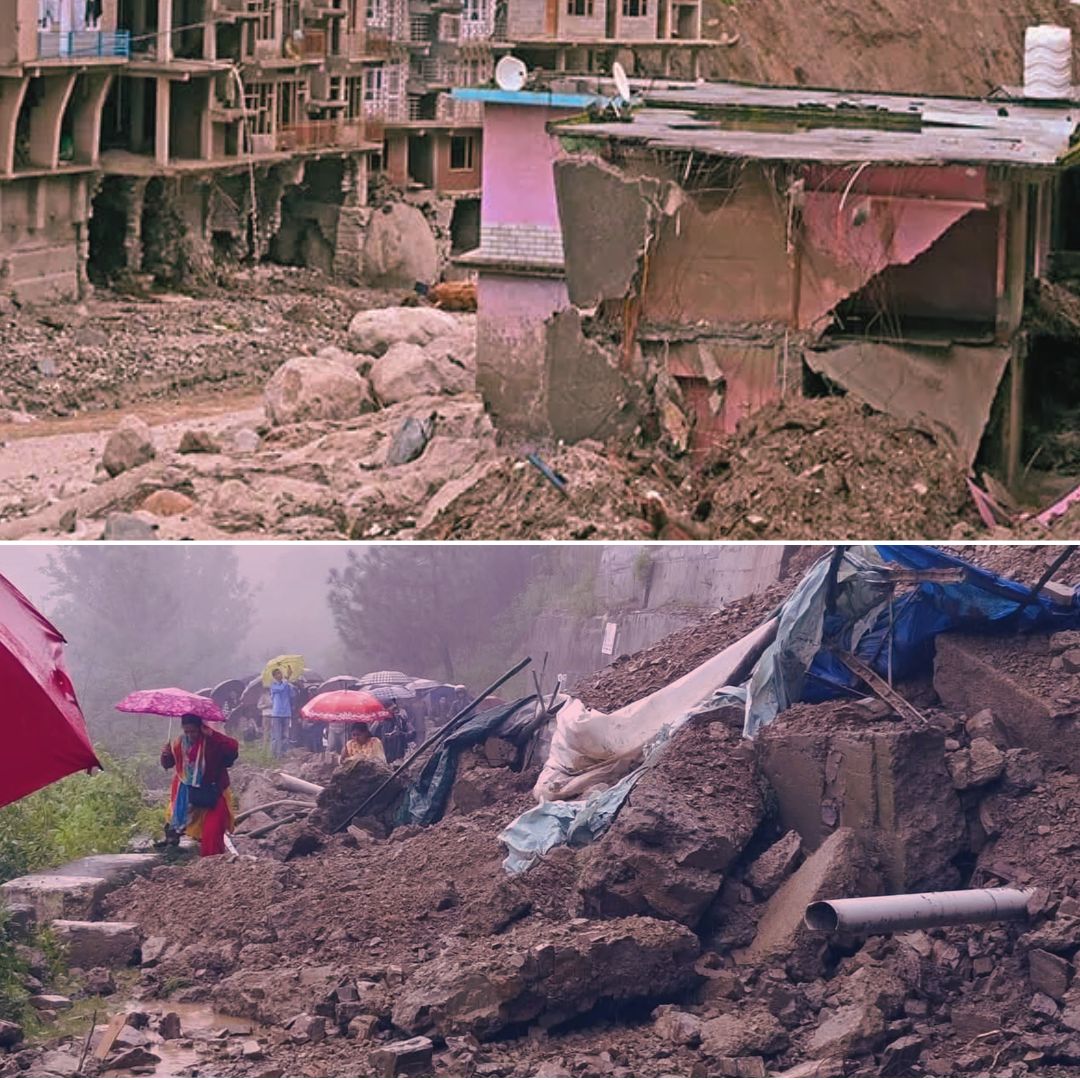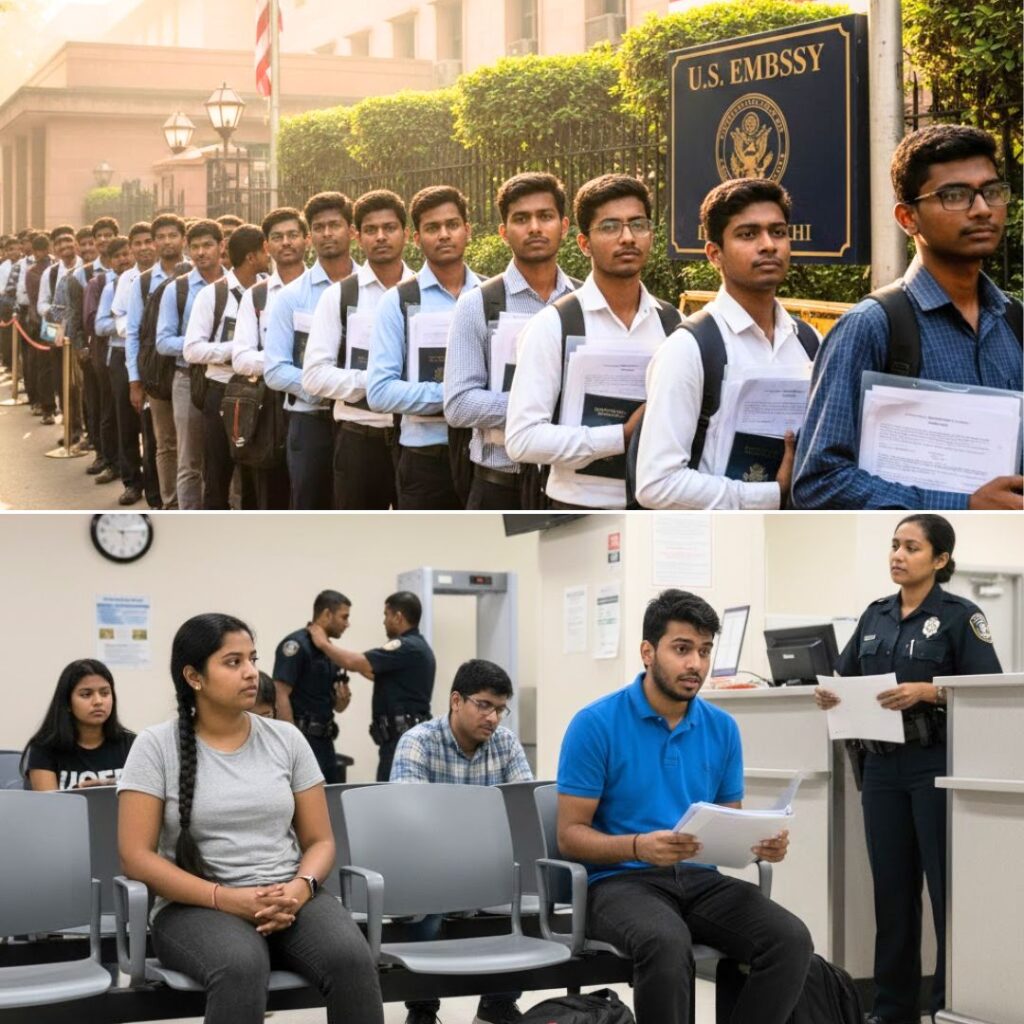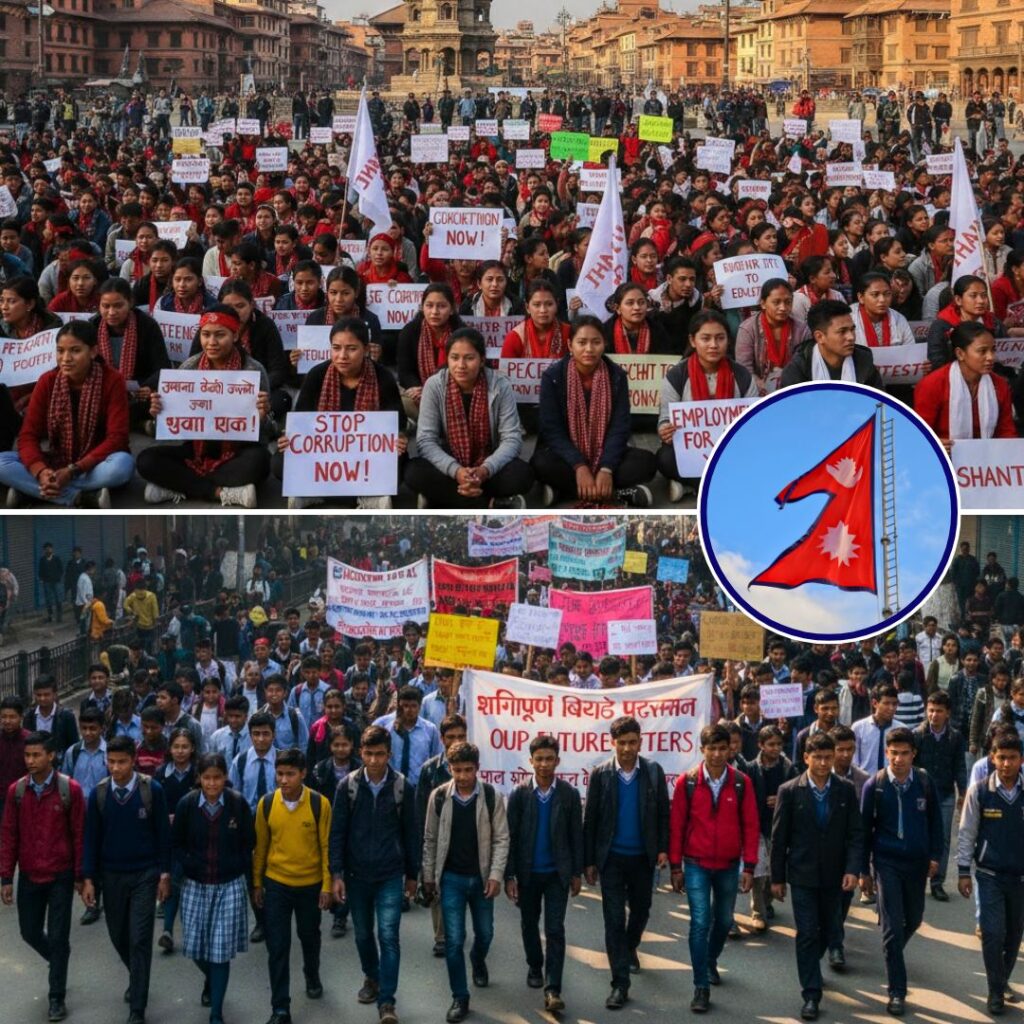At least four people, including a five-year-old child and a newlywed couple, have died due to a series of devastating landslides triggered by relentless monsoon rains in Jammu & Kashmir and Himachal Pradesh.
Torrential downpours have left several others injured, forced the closure of over 400 roads and numerous schools, and led to red alerts for extremely heavy rainfall across multiple northern states. Authorities are conducting rescue operations and urging people to avoid non-essential travel as rainfall and landslide risks remain high
Torrential Rains Cause Tragedy, Damage, and Disruption
Heavy monsoon rainfall lashed the Himalayan region on Monday, causing catastrophic landslides and flash floods. In Jammu & Kashmir’s Reasi district, a 70-year-old pilgrim died and nine others were injured when a landslide struck the old Vaishno Devi track, collapsing a booking office and an overhead structure under intense rainfall — with Katra town recording a staggering 184.2 mm in 24 hours.
In Poonch, a landslide hit a government school, tragically killing a five-year-old student and injuring five others. Lieutenant Governor Manoj Sinha stated, “Directed Shrine Board to provide best possible medical care and support to the injured pilgrims. I’m constantly monitoring the situation,” while Chief Minister Omar Abdullah expressed his “heartfelt condolences” to the bereaved families.
Himachal Pradesh endured similar devastation. In Chamba’s Sutanh village, a newly married couple lost their lives when a boulder, loosened by the rain, crushed their house overnight. The disaster disrupted daily life: major highways and 401 roads — 242 in the severely affected Mandi district alone — were blocked, and flash floods carried timber and debris through valleys, stranding hundreds. Power and water supply were hit across wide areas, with 682 power transformers and 151 water supply schemes affected.
Schools Closed, State on Red Alert as Teams Race for Relief
As landslides and floods continued across both states, officials shut educational institutions in the worst-hit locations to ensure safety. Districts such as Theog, Rohru, Jubbal, Chopal, and Kumarsain in Shimla, alongside parts of Mandi, Kullu, and Sirmaur, saw blanket school closures.
Multiple national highways — including the Chandigarh-Manali and Mandi-Kullu routes — were obstructed, aggravating the travel chaos for thousands. The India Meteorological Department has issued a red alert for extremely heavy rainfall in Shimla, Kangra, Chamba, Sirmaur, and Mandi, warning the public of heightened landslide and flood risks in the coming days.
Authorities and disaster response teams are working to restore connectivity, clear blockages, and provide aid to affected households, while a central government team began on-ground assessment of the destruction in Himachal’s Kullu. Meanwhile, rivers like the Beas are surging dangerously, prompting dam authorities to open floodgates as a precaution. As per official counts, the monsoon toll in Himachal this year has risen to at least 74 dead, with 34 missing and economic losses exceeding ₹1,246 crore.
The Logical Indian’s Perspective
These heartbreaking losses — of young lives, newlyweds, and entire communities thrown into uncertainty — serve as a stark reminder of the human cost of extreme climate events.
The Logical Indian calls for deeper compassion, urgent climate resilience planning, and a collective commitment to disaster preparedness. It is time to reimagine how our communities, governments, and civil society can anticipate and mitigate future calamities while ensuring the safety and dignity of every individual.











